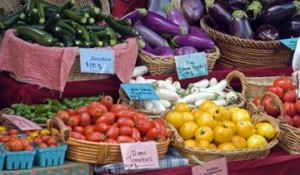
Food labelling modernization starts close to home
By Sara Zborovski
Business Operations Regulation CFIA food law regulatory modernizationNew definitions of “local” food and beverages take a broader approach
If you’re in the food biz these days, it’s hard to not get a little excited about the modernization makeover happening over at the Canadian Food Inspection Agency (CFIA). Within the past year, we’ve seen the introduction of the Safe Food for Canadians Act and more recently the Safe Food for Canadians Action Plan and much chatter (and even action!) around improving the agency’s food inspection models.
The agency has been all about fixing antiquated standards and improving systems to better reflect the realities of the food and beverage industry (dare I say, “Bravo!”).
One of the latest modernization undertakings was announced by the CFIA on May 10 – modernization of the agency’s food labelling approach. According to the CFIA, it will begin reviewing its food labelling regulations, guidelines and policies “in the coming weeks.”
As a start, it has reconsidered how industry can use the claim “local” on foods and beverages: the CFIA has adopted an interim policy, under which local food is defined as food produced in (or within 50 km of) the province or territory in which it is sold. This change is based on the CFIA’s recognition that its previous approach to defining local food is “outdated and does not reflect current food production practices or consumer needs and expectations.”
Previously, the CFIA interpreted “local” or “locally grown” to mean food that originated within a 50 km radius of the place where it was sold, or originated within the same, or an adjacent, local government unit (i.e. municipality, county or town). In practice, this meant that a burger joint in Alliston couldn’t claim its food was “local” if it sourced its beef from Zurich, Ont., 200 km away.
 The new definition of local takes a broader approach, focusing on provincial rather than municipal boundaries. This brings the federal definition more in line with proposed provincial ones, like in Ontario’s proposed Local Food Act. Under Ontario’s proposed Act, “local food” means any food produced or harvested in Ontario, and food and beverages made in Ontario that include ingredients produced or harvested in the province.
The new definition of local takes a broader approach, focusing on provincial rather than municipal boundaries. This brings the federal definition more in line with proposed provincial ones, like in Ontario’s proposed Local Food Act. Under Ontario’s proposed Act, “local food” means any food produced or harvested in Ontario, and food and beverages made in Ontario that include ingredients produced or harvested in the province.
As with most label claims, labelling foods as local is not mandatory; however, it is encouraged. There’s a general sense that the more truthful (and not misleading) information that industry can provide to consumers on labels, the better. (And doesn’t the branding lawyer in me always say that the more information you can give a consumer to encourage them to choose your product over the competition the better?).
Proponents of the local food movement contend that labelling foods as “local” is particularly important. Many reasons are given for encouraging us to eat and drink locally, including strengthening the local economy and fostering a sense of community, reducing the environmental impact of transporting food, and reducing the need to “ripen” (i.e. process) fruits and vegetables that are picked early to facilitate shipping.
It remains to be seen if the CFIA’s interim definition of “local” will work for everyone. The interim policy has been put into immediate effect, and will remain in effect until the CFIA’s review of its food labelling regulations, guidelines and policies is complete.
The CFIA promises to consult with consumers, industry and other stakeholders in the course of the modernization of its food labelling approach, and we can expect announcements relating to such consultation in the weeks and months to come.
In the meantime, industry should take advantage of this new, broadened definition of “local.” But keep in mind that use of the claim is still subject to the overarching prohibitions on false and misleading claims set out in the Food and Drugs Act and the Consumer Packaging and Labelling Act.
Sara Zborovski is a partner at Gilbert’s LLP in Toronto, practicing food, beverage and drug law. She also hosts her own blog at www.thefoodlawyer.ca
Print this page